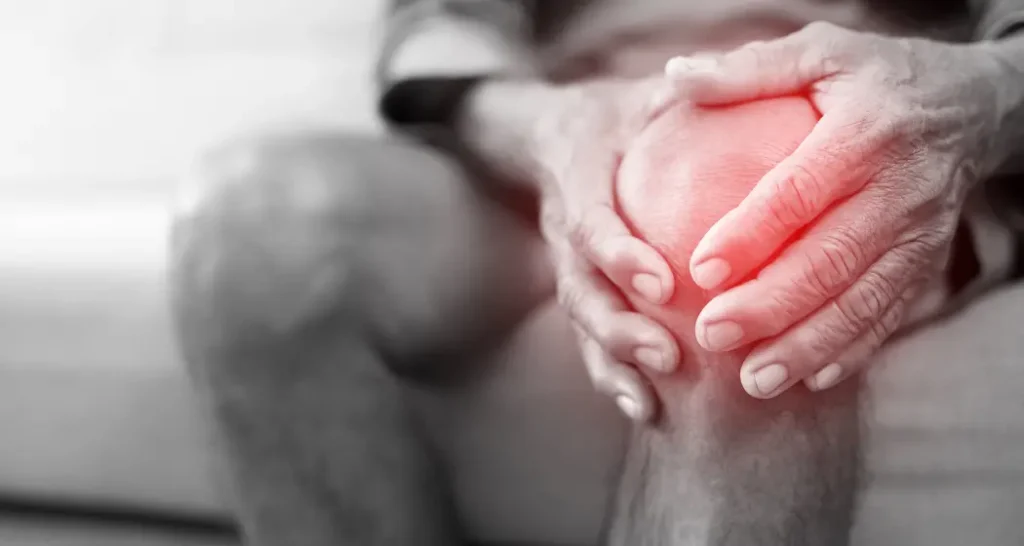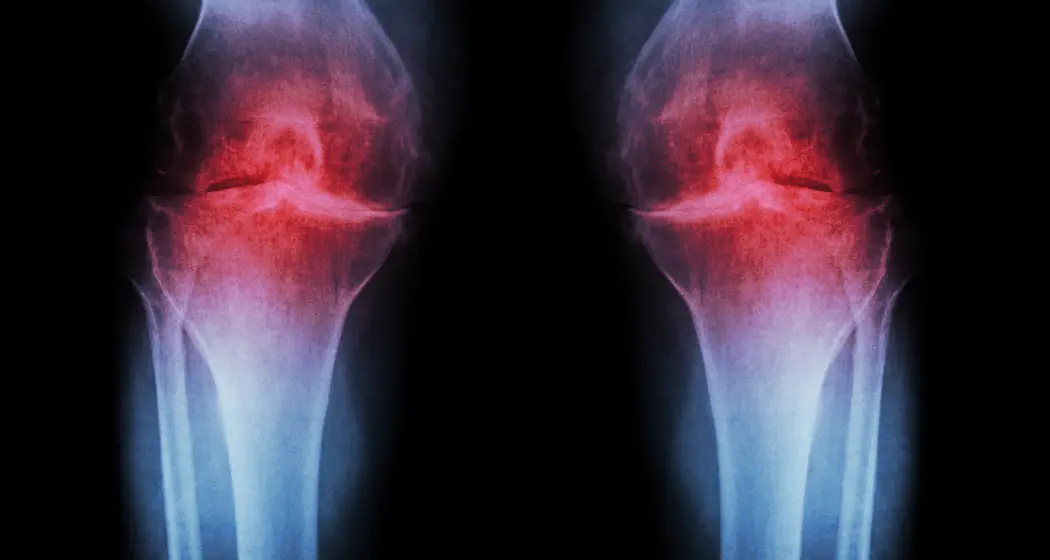Knee osteoarthritis is a degenerative arthritic condition that is usually brought about by excessive wear and tear. This repetitive damage can lead to a progressive loss of cartilage, joint space and even internal derangement affecting the inner cartilage or meniscus. This type of degeneration in the knee is usually when Osteoarthritis of the knee hurts the most.
Knee osteoarthritis is usually divided into two types, primary and secondary osteoarthritis. Primary osteoarthritis often has no direct cause or reason for the damage and destruction of the articular cartilage. In contrast, secondary osteoarthritis is usually triggered by trauma, injury, deformity, disease, or infection. Osteoarthritis is most common in the elderly. Secondary arthritis can occur at a younger age, especially if that individual has had trauma, previous fracture or joint injury.
Osteoarthritis of the knee has four distinct stages. Each stage causing various levels of knee pain, thus answering the question when does osteoarthritis of the knee hurt the most.
The Normal phase: Stage 0:
This normal stage, stage zero is usually assigned to a healthy knee joint that has no signs of degeneration or arthritis. In this phase, individuals typically experience no pain or discomfort, and medical professionals do not recommend any treatment
The first stage, considered Stage 1: Minor
The first stage, or stage 1 usually starts with very minor or little pain, that may come and go and even disappear. During this phase many people will just pretend that they don’t have a problem or even write it off and blame it on age. This is a terrible mentality to have, because the osteoarthritis may go undiagnosed until it reaches a more advanced stage. In this stage of osteoarthritis, osteophytes may occur—smooth bony growths. Over time, these spurs can damage the joint space.
Usually during this time X-rays will appear normal, however damage is occurring in the joint, even though the person may not feel it.
During this phase, it is advisable to recommend knee exercises and strengthening activities. Also during this stage, practitioners can perform treatments involving physical therapy, light exercise, and strengthening.
The Second Stage, Stage 2: Mild pain
This is the stage when people with osteoarthritis of the knee begin to experience symptoms and pain. There may be physical evidence on X-ray including slight damage and increased osteophyte formation, bone growth or bone spurs. The space between the bones will begin to narrow. There is also evidence of cartilage damage and slight loss or thinning of this cartilage. At this stage, there is still some cartilage and synovial fluid between the bones in the joint, so the bones are not fully touching and contacting each other.
There is no grinding, but audible crackling or popping with certain movements. Tenderness becomes common during this phase, both with movement and at rest. People will report pain after running, exercising or standing for an extended period of time as well as pain after prolonged inactivity including sitting or standing.
This is a perfect time to further prevent the damage of Osteoarthritis. During this phase viscosupplementation or hyaluronan can be prescribed, along with regenerative medicine such as ozone or prolozone therapy, PRP platelet rich plasma therapy is also a great option. Strength training and low-impact aerobics can strengthen muscles around the joint, increasing stability and reducing the risk of additional joint damage. Braces and wraps can help stabilize joints and protect the joint from exertion especially if performing exercises like kneeling, squatting, or jumping.
Stage 3: Moderate Pain
In Stage 3, there is visible damage to the cartilage and visible loss of joint space. In this phase osteoarthritis pain begins to hurt more severely. There is also visible swelling, inflammation and decreased range of motion. People in this stage experience frequent pain and inflammation while performing physical activity including running, walking, bending, or kneeling.
During this phase, people may experience pain even without activity. Long periods of joint immobility can cause discomfort, and morning pain may be more severe.. Causing people to wake up with pain and discomfort.
During this phase, oral medications often do not relieve the pain and discomfort. Many physicians will recommend corticosteroids injections. However, the side effects and the damage that are caused by these medications is extremely high. Thus, it is better to try alternatives such as viscosupplementation, and even regenerative medicine.

Stage 4: Severe Pain
People with Stage 4 usually describe this stage as osteoarthritis knee pain that hurts the most. Usually in this phase people will experience pain with movement and activity as well as with rest. The joint has significant structural damage, including loss of joint space, cartilage damage, bone spurs, and calcifications. All this damage reduces the fluid around the joint and causes more friction on the bone, this friction causes inflammation and severe pain.
Oftentimes, surgery is the most recommended course of action to relieve this pain and discomfort. The most common surgery being a total knee replacement, however there are alternatives including regenerative medicine using human biologics or human cellular tissue.
If you have knee pain, and think that you may have osteoarthritis, feel free to schedule a consultation with our facility. Waters Edge Medical Clinic and Spa. We believe that early detection can slow the progression of arthritis and even prevent serious damage. Our team at Waters Edge Medical Clinic and spa is trained and skilled in treating osteoarthritis. Feel free to schedule a free consultation with us.

